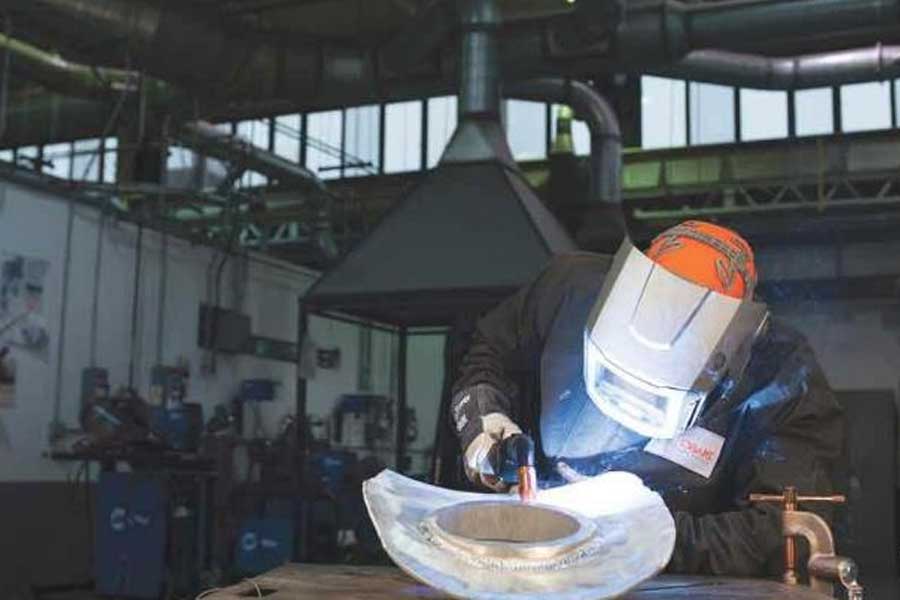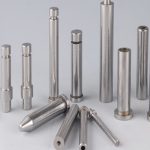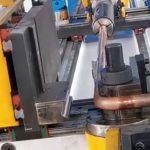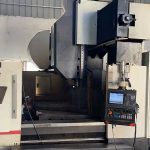From automobile manufacturing to shipbuilding and trailer manufacturing, Aluminum has always been an increasingly popular material, mainly due to its high strength-to-weight ratio and corrosion resistance. This material allows these industries to produce products that are lighter but can withstand the demanding requirements of use. Especially for automotive applications, aluminum helps to improve vehicle emissions and save fuel.
Although aluminum has many advantages, it is difficult to weld. Due to its inherent oxide, high thermal conductivity and fast cooling rate, it requires better cleaning methods and slightly different welding techniques to achieve good welding results compared to steel.

Welding wire is much softer than steel wire and easily deformed or crushed, so it also brings potential problems. In gas metal arc welding (GMAW) applications, this means that there is a greater chance of wire feeding problems. This is especially true when using 4000 series, 4043, 4943 and 4047 4000 series welding wires. These welding wires have the advantages of better wettability and weld appearance, but because their columnar strength is less than the strength of the welding wire, it is easier to feed other aluminum alloys or steel wires into the welding gun lining.
Five simple steps can help you minimize wire feeding problems and the downtime associated with them.
Tips to prevent poor wire feeding
The problem of aluminum wire feeding can take many forms. When the welding wire is tangled in the drive roller system, it will wrap around. Burning back is the result of the wire melting inside the contact.
Using the right equipment and components and setting up the aluminum welding system is the best defense against wire feeding problems.
1. Use the right gun. When welding aluminum, it is best to use a spool gun or push/pull gun.
The spool gun can hold 1 pound (4 inches) of weight. Welding wire spools are very suitable for small applications that do not require a large number of welding wire replacements. Although these spray guns can be used with longer cables, since the spool is mounted on the spray gun itself, the wires only need to be fed a short distance (usually 8 to 10 inches). This helps to minimize some feeding problems.
Spool guns do have limitations. Their design may hinder access to confined areas, so the spool must be replaced very frequently. The spool also adds to the weight of the spray gun, so you may find it tiring to weld for a long time.
The push/pull spray gun is designed to feed aluminum wires over longer distances (up to 50 feet). The motor in the gun pulls the wire, and the auxiliary motor in the wire feeder pushes the wire through the bushing, which helps to feed the wire smoothly to avoid bird-catching.
2. Select the correct drive roller and set the tension correctly.
Use U-groove drive rollers to avoid flattening or deforming the aluminum welding wire. These can effectively feed the wire while maintaining its round shape and preventing shaving, which may block the liner.
Setting the tension of the drive roller depends to a certain extent on practice and experience. Ensure that the drive rollers are aligned and use the lowest drive roller pressure to still provide consistent wire feed. The key is to avoid putting too much stress on the welding wire from the feeder to the contact in the entire welding system, which may cause the welding wire to become wavy when leaving the contact, and may cause arc instability. It is also important to have enough tension to prevent the drive roller and wire from slipping.
Incorrect drive roller tension can cause different problems, depending on whether you are feeding paper from 1 pound. Use a spool gun to wind the spool, or use a push/pull gun to feed the material from a large barrel of spool. Excessive tension usually results in wrapping, because even if there is an obstacle, the drive roller will try to push the wire into the contact tip instead of letting it slip off. If you are welding with a large wire drum, too much drive roller tension will also limit the smooth rotation of the wire when it leaves the wire drum, which may cause the wire to become tangled.
3. Choose high-quality thread and set the brake tension of the spool correctly.
The quality of the aluminum wire you buy and use will affect its feedability. Look for high-quality metal wire with a smooth surface, consistent castings and spirals to help it feed more smoothly. Lower quality wires may be drawn from the tip of the contact in the form of wave motion, resulting in an unstable arc.
When setting the wire feeder, make sure to set the brake tension (tension force on the spool) appropriately. The spool should have enough tension to prevent the spool from being too large when the welding is stopped, but not too large to prevent the spool from rotating easily.
4. Use contact tips, linings and guides
Specially designed for aluminum wire. Manufacturers of consumables provide aluminum-specific contacts that have smooth holes that are slightly larger than the tip of the steel wire for a given wire diameter. Compared with steel, aluminum wire has a higher expansion coefficient, so a larger inner diameter (ID) can accommodate the increase in diameter of the aluminum wire when it is heated. This helps prevent flashback.
It is recommended to use aluminum or Teflon linings for aluminum welding because they have a very low coefficient of friction and can prevent scratching of soft metal wires that can cause clogging. Clogged liners can cause winding and premature wear of the contact tips, both of which increase downtime and are costly to resolve.
Also, please use non-metallic inlet and middle guide to prevent aluminum wire from scraping.
5. Follow the correct handling technique.
It is very important to handle the spool correctly. Always lift the spool from the bottom or the center. Never lift the spool in a way that allows the flange to flex away from the wire, as this may damage the delicately wound wire layer. Be careful not to damage the way the wire is wound on the spool by dropping or adjusting it in other ways.
The aluminum wire bobbin is wound horizontally to ensure consistent wire feeding. Any bends on the spool or flange can cause the welding wire to jam or hang, which can cause feed problems during the welding process.
As always, a trusted welding equipment or filler metal manufacturer or welding distributor can be a valuable resource to help you solve your aluminum welding needs or problems.
Link to this article: 5 simple steps to solve the problem of aluminum welding wire feeding
Reprint Statement: If there are no special instructions, all articles on this site are original. Please indicate the source for reprinting:https://www.cncmachiningptj.com/,thanks!
 Sheet metal, beryllium, carbon steel, magnesium, 3D printing, precision CNC machining services for heavy equipment, construction, agriculture and hydraulic industries. Suitable for plastics and rare alloys machining. It can turn parts up to 15.7 inches in diameter. Processes include swiss machining,broaching, turning, milling, boring and threading. It also provides metal polishing, painting, surface grinding and shaft straightening services. The production range is up to 50,000 pieces. Suitable for screw, coupling, bearing, pump, gearbox housing, drum dryer and rotary feed valve applications.PTJ will strategize with you to provide the most cost-effective services to help you reach your target,Welcome to Contact us ( [email protected] ) directly for your new project.
Sheet metal, beryllium, carbon steel, magnesium, 3D printing, precision CNC machining services for heavy equipment, construction, agriculture and hydraulic industries. Suitable for plastics and rare alloys machining. It can turn parts up to 15.7 inches in diameter. Processes include swiss machining,broaching, turning, milling, boring and threading. It also provides metal polishing, painting, surface grinding and shaft straightening services. The production range is up to 50,000 pieces. Suitable for screw, coupling, bearing, pump, gearbox housing, drum dryer and rotary feed valve applications.PTJ will strategize with you to provide the most cost-effective services to help you reach your target,Welcome to Contact us ( [email protected] ) directly for your new project.
Link to this article:5 simple steps to solve the problem of aluminum welding wire feeding
Reprint Statement: If there are no special instructions, all articles on this site are original. Please indicate the source for reprinting:Alloy Wiki,thanks!^^







